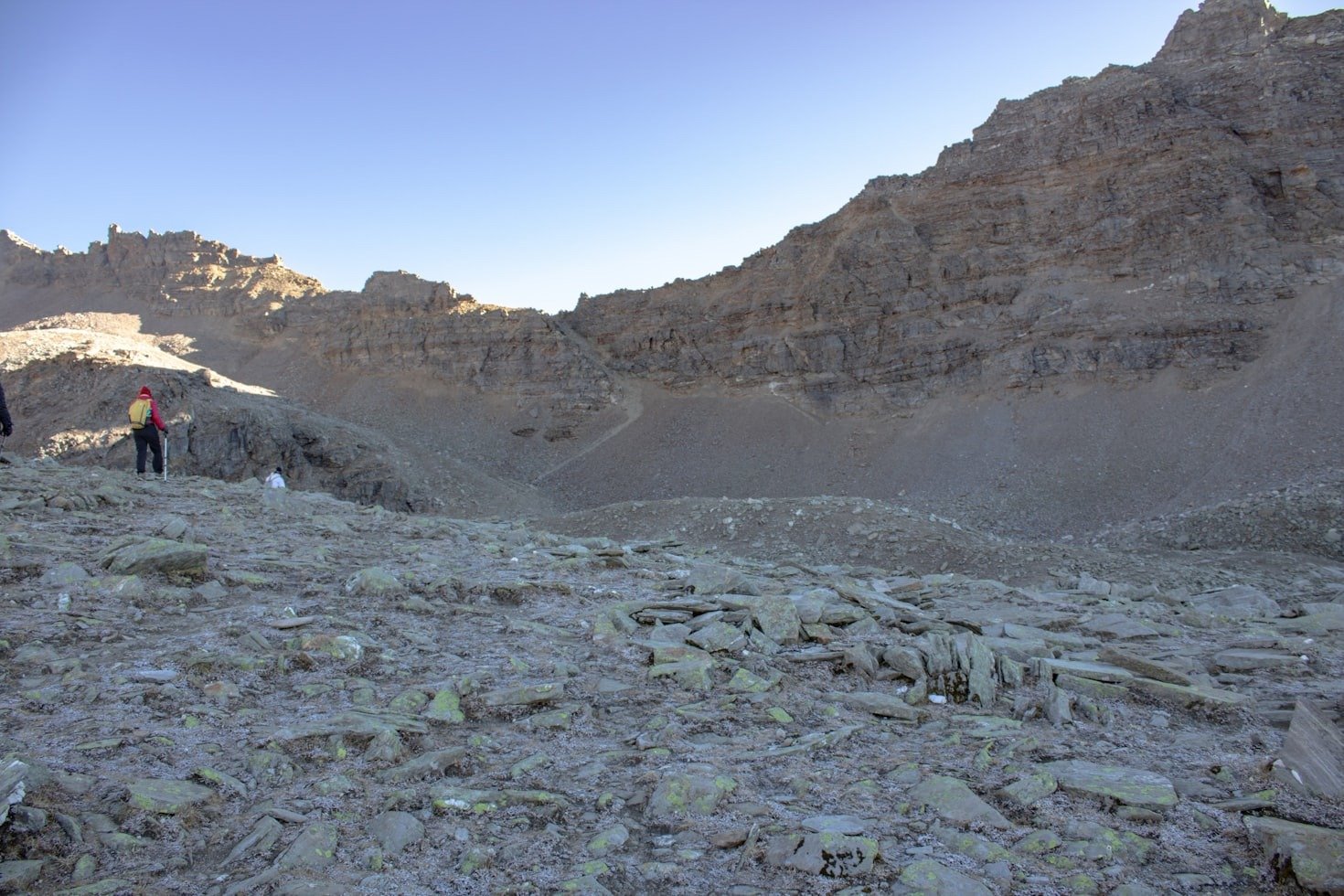So, you’ve decided to take on the Rupin Pass trek! This high-altitude trek in the Indian Himalayas is a blend of breathtaking landscapes and physical challenge. You’ll hike through verdant meadows, cross gushing rivers, traverse snow-covered trails, and ultimately scale the Rupin Pass at an elevation of 15,250 feet. While the allure of the trek is undeniable, it’s also not for the faint of heart.
Proper preparation can make or break your experience, and that’s where your gear comes in. Whether you’re a seasoned trekker or a first-timer, having the right equipment ensures your safety, comfort, and enjoyment on the trail. Let’s break down the essentials you need to conquer Rupin Pass, one of the most stunning and demanding treks in India.
Understanding the Terrain and Weather of Rupin Pass Trek
The Rupin Pass trek spans over 52 kilometers, with an altitude gain that takes you from around 6,000 feet to a staggering 15,250 feet. You’ll experience an incredible diversity of landscapes—from lush forests and hanging villages to stark snowfields and rocky ascents. The terrain is a mix of steep climbs, slippery descents, and river crossings, requiring gear that can adapt to these changes. The trail demands stamina and careful navigation, so packing wisely is key to handling everything the mountain throws at you.
Weather is another unpredictable factor on the trek. While you may start your journey in relatively mild conditions, the temperatures can plummet rapidly as you ascend. The higher reaches of Rupin Pass often experience sudden rain, snow, or even sleet, especially from late afternoon onward. Wind chill is another concern at higher altitudes. This variation in terrain and weather means you’ll need a combination of light, breathable clothing for warmer parts of the trek and heavier insulation for when the temperatures drop.
Clothing Essentials: Layering is Key
When it comes to clothing for Rupin Pass, I cannot overstate the importance of layering. Layering allows you to adapt to changing weather conditions quickly. At lower altitudes, it might be warm, but once you reach higher elevations, the cold can set in swiftly, and you’ll need to be able to adjust accordingly. For your base layer, go for moisture-wicking materials like Merino wool or synthetic fabrics. These materials draw sweat away from your skin, keeping you dry even during strenuous sections of the trek.
The mid-layer should provide insulation. Fleece jackets or lightweight insulated down jackets work perfectly for this. They trap heat while still being breathable. Finally, your outer layer should be a high-quality waterproof and windproof jacket—preferably one made with a Gore-Tex or similar material. This will shield you from rain, wind, and snow, all of which are common as you ascend toward Rupin Pass. Also, remember to pack thermal wear for the cold nights. As temperatures can drop below freezing, a warm thermal base layer will make all the difference in maintaining body heat while you sleep.
Footwear: Don’t Skimp on Boots
If there’s one thing I’d insist you invest in for the Rupin Pass trek, it’s your footwear. A good pair of trekking boots can be the difference between a comfortable trek and sheer misery. Given the rocky, uneven, and sometimes slippery terrain, ankle support is crucial. Look for boots that offer sturdy ankle support, a tough grip, and, most importantly, waterproofing. You’ll be crossing streams and potentially walking through snow, so keeping your feet dry is essential to avoid blisters or cold-related issues.
In terms of socks, stick with wool or synthetic materials rather than cotton. Wool socks, especially Merino wool, offer better warmth and moisture management, keeping your feet dry and warm. Pack at least three pairs of trekking socks so you can rotate them as needed. A good practice is to change socks during the day if your feet get wet, reducing the risk of blisters and discomfort.
Backpack: Your Lifeline on the Trail
Your backpack is your lifeline during the trek, carrying everything from your clothing and food to essential survival gear. For a trek like Rupin Pass, a backpack in the range of 40 to 60 liters should be enough. The size you choose depends on how much you plan to carry personally versus what your trekking company might provide. A larger pack is ideal if you’re carrying a sleeping bag, personal gear, and extra layers, while a smaller one might suffice if much of the gear is provided for you.
Look for a backpack with padded shoulder straps, a hip belt, and an adjustable suspension system. This will ensure that the weight is distributed evenly across your body, reducing strain on your back and shoulders. Also, make sure your pack is hydration system-compatible, meaning it has space for a hydration bladder. This will save you from having to stop frequently to take out a water bottle. Lastly, always pack a rain cover for your backpack to protect your gear from getting soaked during sudden downpours.
Sleeping Gear: Stay Warm and Comfy
High-altitude camping can be cold, especially during the Rupin Pass trek, where night temperatures can drop below freezing. A good-quality sleeping bag is an absolute must. You’ll want one that’s rated for sub-zero temperatures, ideally in the -10°C to -15°C range. Depending on your preference, you can go for a down sleeping bag, which is warmer and more compressible, or a synthetic one, which tends to retain warmth even if it gets damp.
Don’t forget about a sleeping mat. Sleeping mats provide insulation from the cold ground, which can suck the heat right out of you during the night. A lightweight foam or inflatable mat can make a significant difference in comfort and warmth. Inflatable mats are typically more comfortable but can be prone to punctures, while foam mats are more durable but bulkier. Choose whichever fits your needs and pack space best.
Trekking Poles: A Lifesaver for Your Knees
I used to be skeptical about trekking poles, but after a few tough hikes, I can’t imagine going without them, especially on the Rupin Pass trek. The constant ascents and descents put a lot of strain on your knees and legs, and trekking poles help distribute some of that pressure. On steep inclines, they give you extra stability, while on descents, they reduce the impact on your joints.
When choosing trekking poles, go for lightweight, collapsible options that can easily fit into your backpack when not in use. Adjustable poles are particularly useful because you can change their length depending on the terrain. For instance, you might want them shorter on ascents and longer on descents. Poles with good grip and shock absorption will also make the trek more comfortable and reduce fatigue over long distances. If you’re planning to take on the Rupin Pass trek and want a seamless, well-organized experience, I highly recommend going with a trusted trekking company like The Searching Souls. They offer expertly guided treks with experienced leaders who are familiar with the terrain and challenges of high-altitude trekking.
Hydration: Don’t Skimp on Water
Hydration is crucial when you’re trekking at high altitudes. Dehydration can worsen the effects of altitude sickness, and believe me, that’s the last thing you want to deal with while trekking. I always carry a hydration bladder with at least two liters of capacity. Hydration bladders are convenient because you can drink while walking, without having to stop and pull out a bottle.
Additionally, water purification is essential. While there are natural water sources on the trail, they’re not always safe to drink from directly. I usually pack a small water filter or purification tablets to ensure the water I’m drinking is safe. Some trekkers prefer UV purifiers, but these tend to be bulkier. Pick what works best for you, but make sure you’re prepared for long stretches where access to safe drinking water may be limited.
First Aid and Personal Hygiene
No trek is complete without a first aid kit, and the Rupin Pass trek is no exception. I always pack a personal first aid kit that includes basic items like bandages, antiseptic ointment, blister pads, and painkillers. Given the high altitude, it’s also a good idea to carry Diamox, a medication used to prevent altitude sickness. You don’t want to be caught off guard by a sudden headache or dizziness when you’re miles away from medical help.
Personal hygiene is another aspect that’s easy to overlook but important for staying comfortable on the trek. Biodegradable soap, wet wipes, and hand sanitizer are essentials. Wet wipes, in particular, can be lifesavers when you can’t shower for a few days. They’ll keep you feeling somewhat fresh and prevent skin irritation.
Weather Protection: Gloves, Hats, and Jackets
At higher altitudes, especially as you approach the pass, the cold can be biting. That’s why having proper weather protection is non-negotiable. Insulated, waterproof gloves are a must. I always carry two pairs—one lightweight for general trekking, and one heavier, waterproof pair for when the temperature really drops or when it snows.
For headgear, a good woolen beanie is essential to protect against the cold. You lose a lot of heat through your head, so keeping it covered is key. On sunny days, a wide-brimmed hat or cap will protect you from the harsh sun at high altitudes, where the UV rays are much stronger.
Sunglasses and Sunscreen: Protection Against the Sun
The sun at high altitudes is much harsher than at sea level. The reflection of sunlight off the snow can cause snow blindness, which is why high-quality sunglasses with UV protection are a must. Polarized sunglasses are ideal, as they reduce glare and provide a clearer view of the trail.
Sunscreen is just as important. I always carry sunscreen with an SPF of at least 50. The higher you go, the thinner the atmosphere, meaning the sun’s UV rays are more intense. Apply sunscreen liberally on your face, neck, and any other exposed areas. Don’t forget your lips—pack an SPF lip balm to avoid dry, cracked lips from the sun and wind.
Small but Important Extras
There are a few small items that might seem insignificant but can really make a difference on the trek. A good-quality headlamp is indispensable for early morning starts or when you’re navigating around the campsite at night. Make sure to bring extra batteries because you don’t want to be stuck in the dark with a dead headlamp.
I also pack a multi-tool or Swiss Army knife, which always comes in handy for everything from fixing gear to opening food packages. Having a trekking map or GPS device is a good backup plan in case you get separated from your group or lose the trail.
Snacks: Keep Your Energy Levels Up
The Rupin Pass trek is physically demanding, and you’ll burn a ton of calories every day. Packing the right snacks can give you that much-needed energy boost during the trek. I usually carry a mix of high-energy foods like nuts, dried fruits, energy bars, and chocolate. These are lightweight, easy to pack, and provide a quick source of calories when you start feeling fatigued.
It’s also a good idea to bring electrolyte tablets or powders. They help replenish the salts lost through sweating and keep you hydrated. Trust me, when you’re tired and pushing through a tough section of the trail, a quick bite or drink with electrolytes can be a game changer.
Emergency Gear and Communication
When you’re trekking in remote areas like Rupin Pass, it’s important to be prepared for emergencies. While mobile networks are spotty, carrying a power bank or a small solar charger for your phone and other electronics is a good idea. That way, you’ll always have a charged phone in case you need to use it for navigation or emergencies.
For added safety, pack an emergency whistle and some reflective gear. If you get separated from your group or find yourself in a tricky situation, a whistle is a simple but effective way to alert others to your presence. Reflective gear can make you more visible in low-light conditions, which can be crucial if you’re trekking late into the evening.
Conclusion
Tackling the Rupin Pass trek is an unforgettable adventure, but it requires the right preparation. From proper clothing layers and sturdy boots to essential survival gear and small but useful extras like sunglasses and snacks, each piece of equipment serves a purpose. When you’re trekking at high altitudes and battling unpredictable weather, it’s always better to be over-prepared than under-prepared. Having the right gear can make your experience on the Rupin Pass trek safer, more comfortable, and ultimately, more enjoyable.
If you pack smart and stay mindful of the unique challenges the trek presents, you’ll be able to focus on what really matters—the incredible beauty and thrill of Rupin Pass. Happy trekking!
FAQs
- How fit do I need to be for the Rupin Pass trek?
You should be in reasonably good physical shape. The trek involves long days of walking, steep ascents, and challenging terrain. Cardio exercises and leg-strengthening workouts leading up to the trek will help prepare your body. - What is the best time to do the Rupin Pass trek?
The best time to trek Rupin Pass is from May to June and September to October. The weather is more stable during these months, and the trails are safer to navigate. - Do I need a guide for the Rupin Pass trek?
While not mandatory, having a guide is recommended, especially if you are unfamiliar with high-altitude treks. Guides can enhance your experience and help you navigate tricky sections of the trail. - Can I rent trekking gear for Rupin Pass instead of buying it?
Yes, you can rent gear like trekking boots, backpacks, and sleeping bags from local shops in Uttarakhand. However, check the quality and comfort of the gear beforehand. - How do I deal with altitude sickness on the Rupin Pass trek?
Acclimatizing properly is key. Take it slow, stay hydrated, and avoid alcohol. If you start experiencing symptoms of altitude sickness like headaches or dizziness, descend immediately, and consider taking Diamox to mitigate the effects.
Please Read More Trek Related Topics – What to Pack for the Gaumukh Trek: Don’t Miss Essentials



